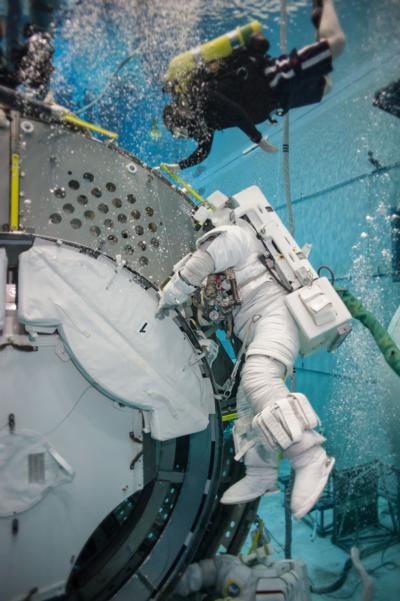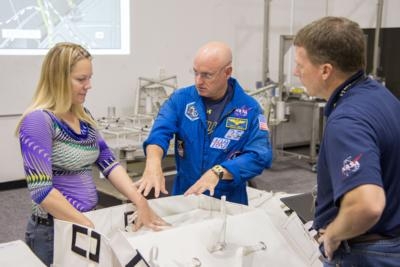NASA Investigating Current Methods To Determine If Adaptations Are Necessary
As NASA develops deep space exploration missions on its journey to Mars, the agency is investigating current training methods in order to adapt to the longer and longer missions.

“During the Shuttle Program, astronauts trained about 5 to 8 years for a 10 to 14 day mission, with a work-timeline scripted down to the minute.” says Immanuel Barshi, a research psychologist from NASA’s Ames Research Center in Moffett Field, California, in the center’s Human Systems Integration division.
Decades of crew member research demonstrate that space can have adverse effects on people. Data suggests that the longer humans are in space, the greater the effects. On a trip to Mars, for instance, humans will be exposed to three years of microgravity and radiation; confined in an environment with three to five other people; separated from home; will experience altered day-night/light cycles; and will have three years to inevitably forget some of the training learned before leaving the planet.
Barshi’s research, a study called Training Retention, examines to what extent these aspects of a Mars mission might affect a crew member’s performance, as well as provide fresh insights into the way humans are trained for their jobs on Earth. Working with collaborators at NASA’s Johnson Space Center in Houston, Barshi will study astronaut Scott Kelly’s performance during his one-year mission aboard the International Space Station, in addition to that of other astronauts on six-month missions, and will compare results with astronauts on the ground over the same timeframe.
In conjunction with the Center for Research on Training at the University of Colorado in Boulder, Colorado, Barshi will compare the astronaut skill retention data from space and ground with that of undergraduate students. Much of what is known on how people learn and how well they retain information or skills is based upon university research. Such comparisons are critical to the application of ground assumptions to space operations, especially how the effects of long duration space travel affect crew members.
“Researchers know that skills retained for long periods are very specific, while generalizable skills decay much faster unless continuously practiced,” says Barshi.

For example, a person can learn to enter the numbers 8675309 on a computer keypad extremely fast with excellent accuracy, and retain the skill for a long time. Ask them to do the same task, only this time using a different number sequence and the same person will be just as slow as another person who never practiced the original task. Meaning, it is the specific sequence of numbers that people remember, not the generalizable skill of entering any number.
Results from this study will not only inform choices about astronaut pre-launch, on-board and follow-on training, but they may apply to training requirements for other professional careers. Currently, high risk industries, such as oil drillers, nuclear power plant operators, medical doctors and aircraft pilots or air traffic controllers, set training requirements based upon industry consensus and not necessarily specific research.
“Hopefully we will be able to distinguish whether a shorter interval or longer interval in training works and ask whether we are excessively training people with no added benefit or saved lives, but with added costs and inefficiency,” said Barshi. “And to ask, even more importantly, are we are training people enough?”
(Images provided by NASA. Top: Astronauts Scott Kelly and Kjell Lindgren during International Space Station EVA Maintenance 9 Training at the Neutral Buoyancy Lab at the Sonny Carter Training Facility. Bottom: NASA astronaut Scott Kelly (center) and NASA astronaut Terry Virts participate in an extravehicular activity (EVA) maintenance training session in the Neutral Buoyancy Laboratory near NASA's Johnson Space Center. Crew instructor Sandra Moore assists Kelly and Virts)
 NTSB Final Report: Rutan Long-EZ
NTSB Final Report: Rutan Long-EZ ANN FAQ: Turn On Post Notifications
ANN FAQ: Turn On Post Notifications Classic Aero-TV: ICAS Perspectives - Advice for New Air Show Performers
Classic Aero-TV: ICAS Perspectives - Advice for New Air Show Performers ANN's Daily Aero-Linx (06.28.25)
ANN's Daily Aero-Linx (06.28.25) Aero-News: Quote of the Day (06.28.25)
Aero-News: Quote of the Day (06.28.25)




